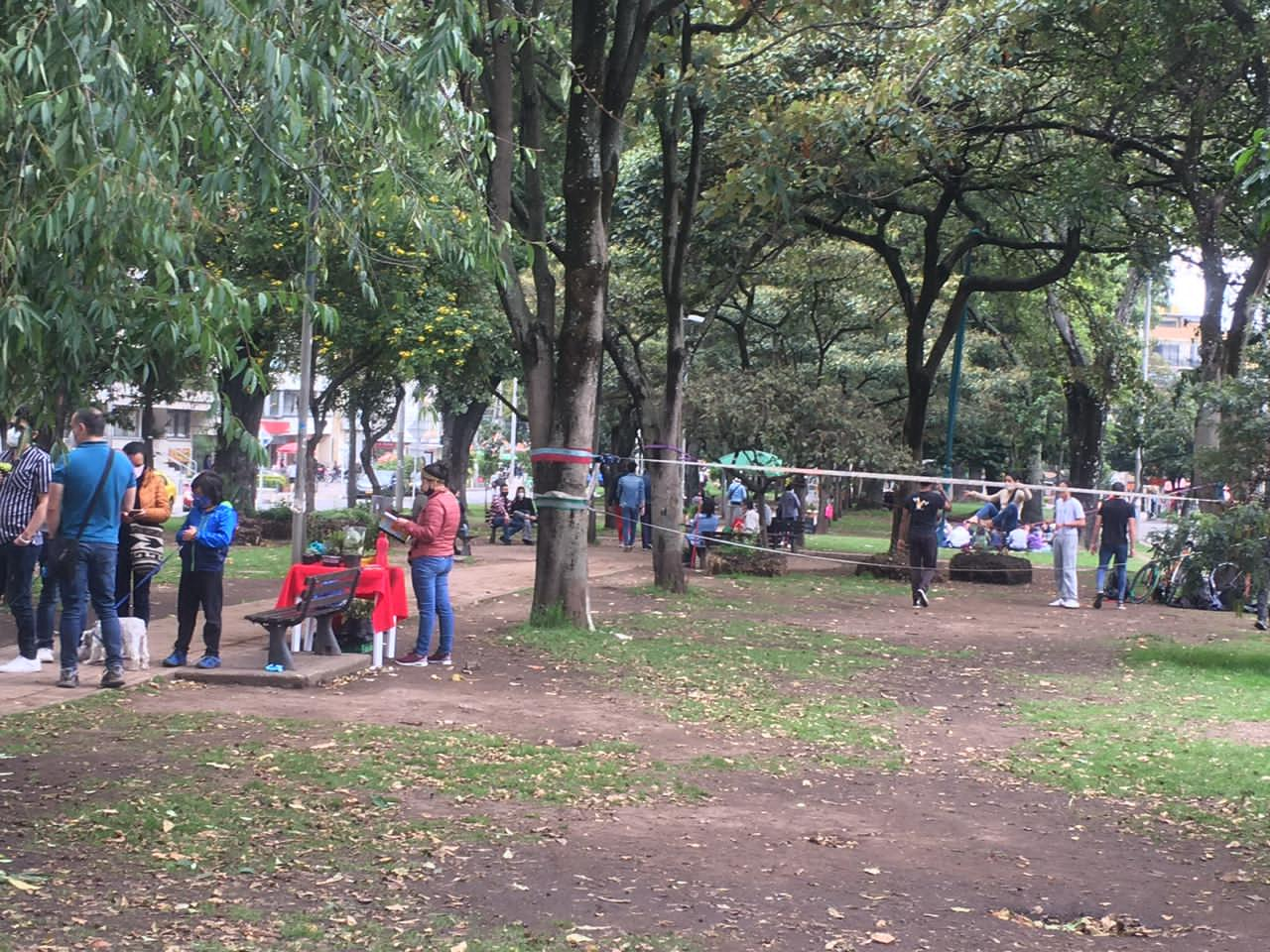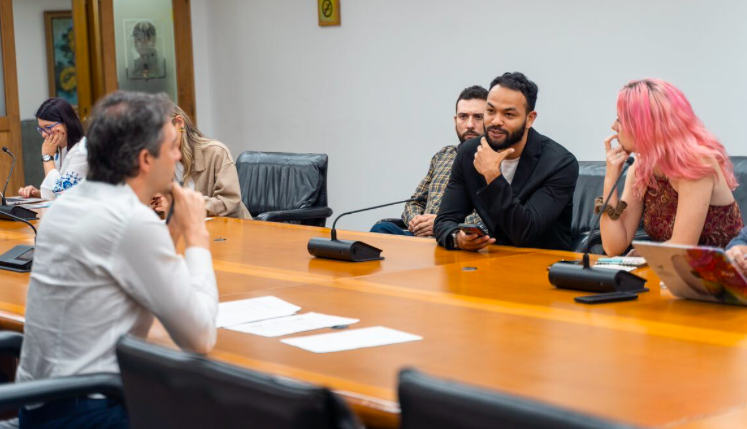
Photo: Interview with Daniel Quintero. Credit: Jonathan Nassif
We speak to Medellín Mayor Daniel Quintero to learn about his Valley of Software, Specialized Innovation Nodes, and how he aims to provide opportunities for the city’s youth.
Like many cities in Colombia, Medellín has attracted its share of headlines, good and bad. For example, some highlight it as an example of transformation and resilience, going from being the world’s most violent city in the early 1990s, with almost 1,000 homicides per month, to the most innovative in 2012. The city received this recognition from Citigroup and The Wall Street Journal, in partnership with the Land Urban Institute, a nomination that surpassed other major cities such as Tel Aviv (Israel) and New York (USA).
But it’s been over 10 years since Medellín attracted all those accolades for its innovation, and Mayor Daniel Quintero is keen to put the city back in the spotlight. Speaking to journalists from Espacio, the mayor talked about some of the challenges Medellín needs to overcome and how he hopes that promoting social transformation through technology, education, and entrepreneurship can create a better future for the city.
To understand the city’s present and potential for the future, it’s important to look at its past, and the failures that came with it. During the 1990s and early 2000s, city residents — its youth in particular — were ensnared in a vicious cycle of violence driven by drug cartels and illegal armed groups that was fueled by a lack of economic and social opportunities.
For Quintero, whose term ends on December 31, 2023, young people in the city shouldn’t be seen as a danger, but as an opportunity for positive progression.
“Medellín became the most violent city in the world because it turned its back on young people”
“The greatest challenge facing world leaders today is the fight against inequality and climate change, situations that are perfectly connected in Medellín: the poorest are at the same time those who live in the areas most vulnerable to natural disasters,” says Quintero. “We believe that Medellín became the most violent city in the world because it turned its back on young people. Medellín’s strategy now is to change that narrative and tell young people that they are important and that there is a mayor who treats young people as potential entrepreneurs.”
With this in mind, his administration is betting on innovation and technology as the main tools for social transformation in the city. The current government wants to change the mentality of young people across the cityscape so that they are motivated to start a learning path in technology. Free registration, computers for high school students, and spaces dedicated to encouraging connection are all part of the new ecosystem that Medellín is building to encourage learning and creativity in problem-solving,
When asked about the importance of promoting this vulnerable social group, the mayor’s message is:
“What young people especially need is to recognize that they are relevant to the future of their community, the city, and the country. We invite you to train in the skills of the technology industry, take your ideas to the next level, generate your ventures and carry out technological projects to improve your quality of life.”
Creating a Valley of Software
Quintero is very aware that any unequal city can quickly become dangerous. Indeed, he says Medellín could once again become the most dangerous city in the world. The reason? “That is the danger of inequality, it makes young people vulnerable to violence,” he says. His aim is to ensure the city does everything possible to provide greater opportunities to young people.
Under his administration, Medellín has taken some steps to improve its image. For example, it has been expanding and improving its already robust mass transportation system, Metro de Medellín; is working to reduce CO2 emissions with the desire to be globally recognized as an eco-city; and is incorporating more cultural spaces throughout the city.
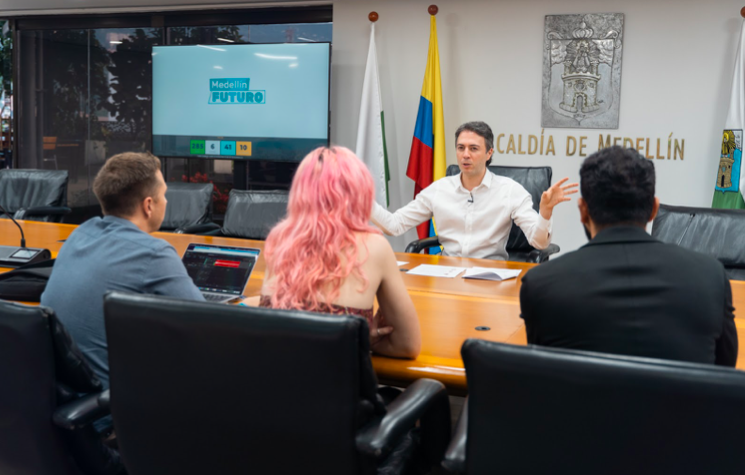
Photo: Daniel Quintero, Mayor of Medellín. Credit: Jonathan Nassif
Perhaps the area where the mayor is most bullish, however, is his plan to make Medellín a leading city for technology, innovation, and entrepreneurship.
In May, the city’s chamber of commerce approved a measure to designate Medellín as a Special District for Science, Technology, and Innovation. In Colombia, these special districts
are territorial entities classified as “special municipalities” and have administration and financing schemes aimed at greater efficiency in the fulfillment of goals, programs, and projects.
In Medellín’s case, as a district focused on science, technology and innovation, the city will have more power in shaping national technology and innovation policy, the ability to work out tax breaks related to the city’s tech sector, and other benefits.
This new districting is a part of a process of social, urban, and economic transformation that the mayor hopes will help Medellín establish a 360-degree innovation ecosystem in which all of the actors can truly connect for a common cause. According to Quntero, the city will leverage its technology and innovation ecosystem to help solve some of the most pressing local — and potentially global — issues, involving citizens, entrepreneurs, larger companies and educational institutions at various levels of the process.
“Medellín has a strategy to become a knowledge economy,” said Quintero. For the mayor, this starts with building what he calls a “Valley of Software,” drawing a connection to Silicon Valley in the United States. Medellín’s Valley of Software seeks to bring the technology and innovation culture to the city’s “barrios,” helping to democratize access to opportunities afforded by technological literacy, generating more economic opportunities for the city’s young people.
Physical spaces called Software Valley Centers (six have been inaugurated to date) are being implemented in different barrios with the aim of improving employability conditions and reindustrializing the city. In addition to stimulating the creation of enterprises and strengthening technology-based companies, the idea is to bring “Ruta N” (a local technology hub created by the city) directly to the city’s neighborhoods that need it most.
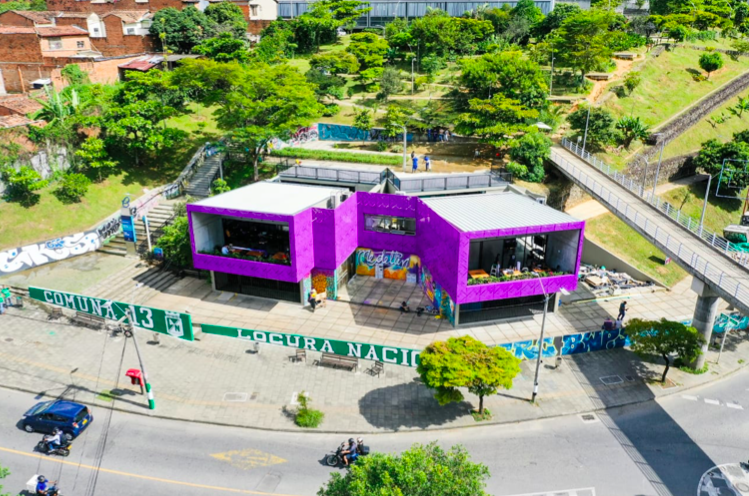
Photo: Valle del Software Center, Comuna 13, Medellín. Credit: ACI Medellin
Another part of his strategy is bringing technology to young people where they live.
So far this year, the Mayor’s Office has said it has given out 150,000 computers to young students from public schools in the city, the largest delivery in Latin America, and the mayor told us that he plans to deliver another 100,000 next year. According to the most recent census data, children under 15 make up 22.6% of the city’s population. In Antioquia, the department where Medellín is the capital, over 26% of the population is between 15 and 29 years old, higher than the national average.
The mayor sees access to computers as a basic key to lifting young people out of poverty and helping them engage more with the educational system.
The mayor struggled, however, to give concrete results of his efforts thus far, but explained that creating a culture of technology and innovation is a process that bears fruit over time. One example he could give looked at how many students are enrolling in technology-related majors at universities.
According to Quintero, who took office in 2020, in 2019, just 60 young people enrolled in technology related majors at the Pascual Bravo University in Medellín. This semester, 687 students enrolled in technological programs, showing what he says is a significant growth in interest around technology which he attributes to the city’s Valley of Software initiative.
Specialized Innovation Nodes: the next step to promoting a connected city
Another of the mayor’s initiatives he heavily promotes are what he calls “Specialized Innovation Nodes,” a scheme that brings together the public sector, academia, private companies, citizens and international actors to help solve real-world problems the city faces.
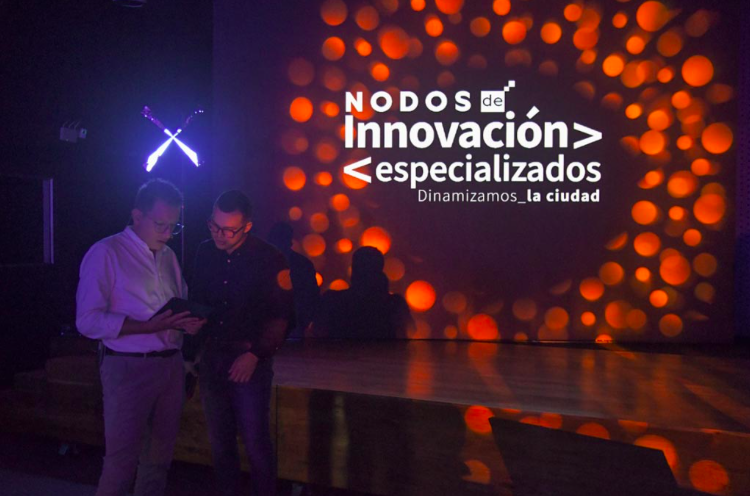
Photo: The Specialized Innovation Nodes. Credit: Mayor’s Office of Medellin
“We want to create an ecosystem for people to connect, collaborate, and share information, but also feel inspired and excited to get involved,” says Quintero. The mayor’s office identified ten problems it wants to tackle by deploying the collective knowledge and resources of its innovation nodes, including in areas such as climate change, education, health, and public services.
“If children and young people receive a computer, then we need to connect them not only to an internet network, but also connect them to each other to solve global causes — one of them being climate change,” explains Quintero. “In the Software Valley Centers young people can experiment with technologies, coworking spaces, learn how to program, 3D print, and use Arduino, or augmented reality, among others.” After providing youth with the technology and skills, he sees the next step as providing them a problem to help solve.
The end goal is to achieve a cultural transformation. The mayor wants to build sustainable change in the city, though it isn’t going to be an easy mission to achieve.
It’s not a perfect city
Of course, Medellín is not a perfect city; no city in the world is. The city has a large number of environmental, mobility, poverty, and social inequality problems—demonstrating that the city still has a long way to go.
Quintero sees the fight against climate change as one of the biggest problems currently facing Medellín. Not only does it affect infrastructure, but it also increases the impact of poverty and inequality, and therefore the number of vulnerable young people.
Flooding in particular is a major threat to the city. After two years of constant rains, physical factors mean the third most densely populated city on the planet is already at high flood risk. To address this situation, the city has gradually been upgrading its sewage system and providing ongoing assistance to people living in at-risk areas. Additional efforts have included helping families to relocate to safer parts of the city.
Technology and innovation, the mayor hopes, will play a part in finding solutions to problems like these.
On the technology startup front, the city also faces an uphill battle. Despite being the second largest city in Colombia and having a reputation nation-wide as being an entrepreneurial city, Medellín is still not an epicenter of high-impact startups in Colombia. This year, Medellin was the only Colombian city to lose its ranking in the Global Startup Ecosystem Index. The city was moved back 22 places and dropped to 205th place globally—losing its spot among the top 200 startup cities in the world.
The city has a large base of important international companies and its business fabric is vital for the country. But the startup ecosystem still has much ground to cover. For the mayor, strengthening Medellín’s position as a hub for entrepreneurship and innovation is a core part of his vision—hoping that these efforts will eventually also solve some of the larger challenges the city faces.




